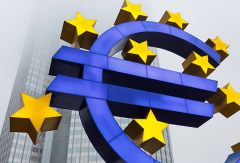The message unanimously churned out by politicians, central bankers, and ‘mainstream’ economists is that central banks are there for the ‘greater good’. They provide the economy with sufficient money and credit, and they fight inflation, thereby supporting output and employment growth. What is more, central banks, are supposedly in a position to effectively fend off or at least mitigate financial and economic crises. However, unfortunately, nothing could be further from the truth.
Throughout history, central banks have been created, first and foremost, to fill governments’ coffers. To increase the king’s or elected government’s financial means through an inflationary scheme – usually too elaborate and too treacherous for most people to see through. Central banks are instrumental for putting the ruler — or the ruling class — into a position where they can plunder the people on a grand scale and, by way of redistributing the loot, making a growing number of people financially and socially dependent on it.
To that end, central banks have been assigned the monopoly of money production. This has made it possible to replace commodities, or “natural money” with unbacked paper or fiat money. Central banks provide commercial banks with fiat central bank money, and commercial banks are free to pyramid a multiple of fiat commercial bank money on top of it. This is what monetary experts typically call a “fractional reserve banking system,” which is a genuinely inflationary scheme.
Murray N. Rothbard even speaks of a cartel between the central bank and commercial banks. In practice, the central bank acts as a cartelizing agent: “to cartelize the private commercial banks, and to help them inflate money and credit together, pumping in reserves to the banks, and bailing them out if they get into trouble.”1 The fiat money cartel, formed between the central bank and commercial banks, has far-reaching economic and social-political consequences.
For instance, fiat money is inflationary in the sense that it loses its purchasing power over time; it cannot, and does not, serve as a much-needed store of value for savers. Also, the issue of fiat money sets into motion an artificial upswing (boom), which, however, must sooner or later flip to a downswing (bust). What is more, fiat money makes consumers, firms, and governments run into ever higher amounts of debt, pushing them towards a situation of over-indebtedness.
There is an additional severe problem with central banks’ fiat money: It affects income and wealth distribution, and it does so in a non-merit-based, anti-free market way. To understand this, we have to consider that if and when the quantity of money increases in an economy, the prices of different goods will be affected at different points in time and to a different degree.2 In other words: A rise in the quantity of money changes – and necessarily so – peoples’ relative income and wealth position.










Leave A Comment